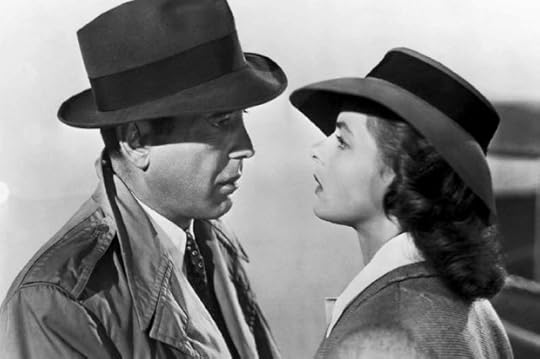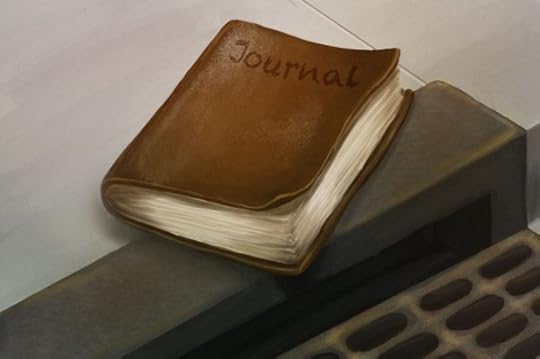Lily Salter's Blog, page 230
November 24, 2017
Need-to-knows before buying Google Home or Amazon Echo

(Credit: AP Photo/Mark Lennihan, File)
If you’ve seen the commercials, you know that Google Home and Amazon Echo – the sleek, voice-activated home assistants that do everything from turn off your lights to read your kids a story – are being touted as the smartest things since sliced bread. With their kid-targeted games, activities, books, and even homework help, what parent wouldn’t want one of these devices to replace screens and make life run more smoothly? But as many early adopters have come to realize, it takes work to make them useful. Otherwise, you’re the proud owner of a very expensive kitchen timer. And as with any artificial intelligence (AI) technology that “learns” your habits, the gains may not be as great as what you give up to use it. Find out what these devices can do, how well they work, and what the privacy issues are before you introduce one into your house.
What do I need to do to make them work? Pretty much right out of the box, folks can use voice commands to “wake” the devices (say: “Alexa” or “OK, Google”) and ask them to do simple things like set a timer, tell a joke, or read a weather forecast. But to do more, you need to dig into the companion smartphone apps to connect your accounts and enable your preferences.
Once you personalize your device, you’ll be able to stream music from services like Spotify, Amazon Music, or Google Play Music. You can also select preferred news sources, restaurant delivery services, and more. It can be hard to remember everything you have enabled on the device, and if you forget exactly how to ask for something, you’ll need to pull up your app.
How well do they work with kids? Both Amazon and Google offer tons of content for kids (called “skills” on Echo and “actions” on Home) from established providers, including Disney, Sesame Street, and Highlights magazine. You can use the device to play games, read audiobooks, recite jokes, provide homework help, and even activate guided Zen meditation for when your kids need to chill out. New stuff is being added to each service all the time, and your kids might enjoy browsing for features on your linked phone app and trying them out with you. It’s not unlike shopping for new apps – it takes time to find what you want, set it up, and figure out how it works. But even without kid-specific games, these assistants can be helpful to kids and families in basic ways, like looking up simple facts, doing math (no cheating on homework!), checking a sports score, and setting a time-out clock.
Are there any hidden costs? A lot of the skills and actions you can add are free, but you still have to pay for memberships and subscriptions – for example, to Amazon Prime, Google Play Music, or Spotify. Amazon and Google will be experimenting with other subscription models in the future, so to maximize the value of the device, you’ll need to stay on top of new features. If you’re interested in smart home products, including light bulbs, thermostats, and home security systems, be aware that they are more expensive than traditional versions and often require an extra piece of equipment.
What could go wrong? Though each service is trying to appeal to families, the most common uses of Alexa and Home are very practical, adult-oriented activities, like reporting commute times, creating shopping lists, and announcing upcoming calendar events. To make sure kids don’t get into trouble using the device’s basic tools, you may need to play around with settings (and set some verbal expectations).
Raunchy music. Remember, Echo and Home will only play music that’s connected to your account. So, to limit explicit lyrics, you should only link services that allow you to set parental controls, such as Amazon Prime Music, Google Play, and Pandora. You’ll need to set content filters in the apps themselves.
Unauthorized purchases. Make sure kids know to ask for permission before buying things or adding items to your shopping list. You can also prevent unwanted purchases by clicking a few settings in each device’s respective apps. In the Alexa app, you can turn off voice purchasing altogether or keep it on but require a PIN for all purchases. In the Google Home app in the Payments section, toggle off Pay with Your Assistant.
Social risks. Child-development experts and sociologists are warning about the impact interacting with AI has on kids. A kid growing up with a home assistant must learn to use the device’s way of interacting, including making demands, having limited conversational abilities, and other traits that don’t prepare you for the nuances of human communication. Anytime you introduce a new technology into your home, you’ll need to guide kids on how to use it and what the expectations are. It’s best to remind kids that even though Alexa doesn’t mind if you’re rude, parents do.
Creepy “drop-ins.” Both devices allow you to make phone calls (“Hey Google, call Toys ‘R’ Us!”). But Amazon is offering something called “Drop In” that allows you to make voice and video calls to an Echo device in another location – sort of like Skype or FaceTime. If you have devices in different rooms of your home, you can use Drop In like an intercom system to “drop in” and let the kids know dinner is ready. With room-to-room Echos, you can start listening immediately – no one has to answer the call. You can also use Drop In if you have elderly relatives living elsewhere that you need to check on. The feature has to be manually enabled for each contact you want to use it with, and if you Drop In on another home, the receiver can decline the call. If you use the screen-based Amazon Show, you’ll appear in a frosted window until the call is accepted. Imagine your best friend “dropping in” when you’re in the middle of potty-training – no thanks!
Should I worry about privacy? Absolutely. The privacy and security issues related to these devices are complex, evolving, and potentially very serious (and cannot all be covered in this article). If you have an Amazon or Google account, you’ve already accepted some of the privacy risks of online life. With Alexa and Home, the same companies that track what you buy, what you watch, where you go online, and even your contacts are right there in your home. And they’re listening. Each company offers some privacy settings in its apps (like the ability to delete your command history), and you can turn off the microphone when you don’t want it to hear you (although it comes back on when you ask for it … which is weird if it wasn’t supposed to be listening).
Neither company is super transparent about how it gathers, stores, and uses the information it collects, and both leave open potential future uses for all that data – essentially getting you to opt into a future transaction that has not yet been identified. Some experts speculate that the more comfortable people get with the device, the more Google and Amazon will infringe on your privacy. For example, they could give transcripts of audio recordings to third-party app developers.
What about kids’ privacy? This is a huge concern and was the biggest contributor to the cancellation of Aristotle, Mattel’s proposed kid-targeted home assistant. That device was nixed after an outcry over third parties collecting sensitive information about children. Both Echo and Home allow you to create individual user profiles for each member of the household, including kids. And both companies offer voice profiles for different family members with different privileges for each person – that’s right, you can train the devices to recognize your kids’ voices. Although kids’ accounts require parental consent, they supply Amazon and Google with lots of information about the littlest members of your household, possibly including matters you’d prefer to keep private, such as medical issues, citizenship status, or problems in school. The companies encrypt that data, and they don’t store it forever. But having that information “in the cloud” means it potentially could be used by third parties to whom you haven’t specifically given consent. Plus, it makes your information vulnerable to data breaches. For now, it’s safest to limit user profiles to adult members of the household.
What else do I need to know? One of the reasons Amazon and Google are vying so strenuously to be your go-to home assistant is because the brand you choose pretty much locks you into that company’s products and services. Each company offers a slew of related devices designed for its respective technology universe (for example, Google’s Chromecast and Amazon’s Fire TV Stick streaming media devices). Each company is also selling the content that plays on those devices. Whether you buy one is up to you. Being an informed customer is the best way to use it safely and get the most out of it.
The same old story: Why “Casablanca” persists

Humphrey Bogart and Ingrid Bergman in "Casablanca" (Credit: Warner Bros.)
When a movie is still talked about three quarters of a century after its debut, revered in the kind of hushed tones normally reserved for discussing a nation’s most precious cultural treasures, people often want to know why. In the case of “Casablanca,” that holy grail of classical Hollywood that turns 75 on Sunday, there is no easy answer.
Sure, there are the iconic performances by Humphrey Bogart, Ingrid Bergman, Paul Henreid, Claude Rains and company. There’s also the film’s auspicious timing, appearing as it did just weeks after General Patton’s troops deployed in Operation Torch declared victory in the North African city where it’s set. Then, too, there are its endlessly quoted lines (“Round up the usual suspects!”), crafted by screenwriters Julius and Philip Epstein, together with Howard Koch, and the many decades of packed revival screenings at repertory theaters and student film societies, not to mention innumerable television broadcasts and TCM airings.
While we may search in vain for a single reason that accounts for the magic of “Casablanca’s” enduring success, it can’t merely be considered “the happiest of happy accidents,” as critic Andrew Sarris once branded it. Even its theme song, “As Time Goes By,” — a Tin Pan Alley number from the 1930s written by Herman Hupfeld, which composer Max Steiner initially shunned — has in its lyrics a line that almost makes a deliberate claim on a deeper narrative foundation that is at once eternal, an ever-green of sorts: “It’s still the same old story.”
Perhaps this explains why screenwriters, novelists and composers still turn to “Casablanca” for source material. “We drink at the well of ‘Casablanca’ many times,” said television writer and producer Matt Selman, who’s had a hand in creating several of the episodes of “The Simpsons” that offer a satirical wink at the picture, in a phone interview with me in 2016. Today, it’s such an essential part of our cultural lexicon that you don’t even need to have seen the movie to recognize the references.
Last year alone brought us a pair of movies that paid homage to that most quoted of classics. In “La La Land,” a blustery love letter to old Hollywood, writer-director Damien Chazelle made a conscious decision not only to cast Emma Stone as an aspiring actress with an outsize Ingrid Bergman obsession, bedroom poster and all, but to have her work on the Warner Bros. lot at a café directly opposite of the set once used for Bogart and Bergman. There’s even the faint suggestion of a direct quote (“Of all the gin joints in all the towns in all the world”), or perhaps more of a thought bubble, delivered by Ryan Gosling’s character, and a recognizable nod to the famous bittersweet ending.
Similarly, in his deeply personal, and comparatively underrated, “20th Century Women,” writer-director Mike Mills incorporated his own mother’s love of Bogart movies of the 1940s into the script. In the film’s opening scene, as the voice-over narration given by the family matriarch Dorothea Fields (Annette Bening) describes the various things that she introduces her son to, when she gets to movies, the camera cuts to an iconic still of Bogart and Bergman on the airport tarmac in their trench coats and snap brim hats. This sort of subtle touch confirms a statement made by Umberto Eco in the 1980s: “Casablanca” is not just one movie, it is “the movies.”
This same tendency to draw on “Casablanca,” and to weave strands of its celebrated story into a new plot, can be found in several highly successful recent novels as well. Adam Johnson’s Pulitzer prize-winning “Orphan Master’s Son,” published in 2012 and set in modern-day North Korea, involves a furtive viewing of the contraband DVD on a laptop in Pyongyang. Its story offers inspiration for a daring escape to America in the absence of letters of transit.
More recently, Amor Towles’ enormously popular novel, “A Gentleman in Moscow,” includes a pivotal late chapter in which the novel’s protagonist, Count Alexander Rostov, watches the movie with a former Red Army colonel. In addition to adding an extra layer of narrative complexity, the episode allows the novel’s protagonist — and, of course, readers along with him — to indulge in the film (“when the smoke from Rick’s cigarette dissolves into a montage of his days in Paris with Ilsa, the Count’s thoughts dissolved into a Parisian montage of his own”).
As Ingrid Bergman once observed of the film late in life: “I feel about ‘Casablanca’ that it has a life of its own. There is something mystical about it. It seems to have filled a need, a need that was there before the film.” Many decades later that need does not yet seem to have left us, and I’m not sure that’s a bad thing.
* * *
Noah Isenberg is the author, most recently, of “We’ll Always Have ‘Casablanca': The Life, Legend, and Afterlife of Hollywood’s Most Beloved Movie.” You can follow him on Twitter: @NoahIsenberg.
November 23, 2017
How do we keep Trump from launching nuclear war?

(Credit: AP/Evan Vucci)
How do you keep an impulsive and ignorant president, a man who has been described by his own Secretary of State as a “f**king moron,” from launching a nuclear war?
That terrifying question, often asked worriedly, privately or rhetorically over the last months, is echoing ever more loudly this week after President Trump insulted another inexperienced authoritarian nuclear commander, North Korea’s Kim Jong-un.
Trump described Kim as “short and fat,” and the 33-year-old dictator responded by sentencing Trump to death. The nightmare of nuclear-armed boys in the playground of geopolitics has come to life.
The U.S. nuclear command and control system, established in 1946, was designed to keep nuclear decisions out of the hands of war-mongering generals and put them in the hand of elected civilians leaders. As a result, a juvenile president has the authority to unleash thousands of nuclear weapons within minutes. There are some 4,000 nuclear warheads under Trump’s control.
Earlier this week, the Senate Foreign Relations Committee held a hearing on the command and control of nuclear weapons for the first time in 41 years.
“We are concerned that the president is so unstable, so volatile, has a decision-making process that is so quixotic that he might order a nuclear weapons strike that is wildly out of step with U.S. national security interests,” said Sen. Chris Murphy (D-Conn).
Sen. Bob Corker (R.-Tenn.), chairman of the committee, acknowledged that senators, including Democrats and Trump’s fellow Republicans, have raised questions about Trump’s authority to wage war, use nuclear weapons and enter into or end international agreements. Last month Corker worried aloud that Trump might be putting the United States “on the path to World War III.”
William Perry, Secretary of Defense in the Clinton administration, who said he was “terrified” by trends in nuclear proliferation before Trump took office, says the American people cannot count on Trump’s advisers from restraining him in a crisis.
Perry says he knows and speaks with James Mattis, Trump’s defense secretary, and he thinks Mattis understands the nuclear threat well. But as Perry told Politico this week, he also doesn’t think Mattis would necessarily be able to do anything if Trump decided to go ahead with a strike.
“The order can go directly from the president to the Strategic Air Command. The defense secretary is not necessarily in that loop. So, in a five- or six- or seven-minute kind of decision, the secretary of defense probably never hears about it until it’s too late. If there is time, and if he does consult the secretary, it’s advisory, just that,” Perry explained. “Whether [the president] goes with it or doesn’t go with it—[the secretary] doesn’t have the authority to stop it.”
Retired Gen. Robert Kehler, commander of U.S. Strategic Command from 2011-’13, told the Senate Foreign Relations Committee he would have refused to carry out a nuclear first strike on presidential orders if he believed it did not meet the requirements of proportionality and necessity under the law of armed conflict. “I would have said, I’m not ready to proceed,” Kehler said.
After the hearing, Senator Ed Markey (D-Mass.) told the Guardian, “I don’t have confidence that a military chain of command would reject an order by the president to launch nuclear weapons in a preventative nuclear war situation.”
Markey and Rep. Ted Lieu (D-Calif.) have a solution: legislation to bar the president from launching a first nuclear strike without a declaration of war by Congress. The president would, of course, still have the power to retaliate if America was attacked, but the bill could help restrain a trigger-happy president.
“I do not see a legislative solution today,” Corker said, after the hearing, “but that doesn’t mean that over the course of the next several months one might develop.”
The obstacles to meaningful action to restrain a madman are many. The first is Trump’s egomania. Perhaps in deference to Trump’s thin-skinned personality, Corker took care to say his hearing was not about Trump.
“This is not specific to anybody,” Corker felt obliged to say, lest the president take the issue personally.
House Minority Leader Nancy Pelosi said the same thing last month when she called for legislation to bar the president from using nuclear weapons unless the United States is attacked first.
“It has nothing to do with him,” she said. “It has to do with the presidency — any president who is there.”
A second problem is that, over the last 75 years, Congress has ceded its constitutional power to declare war to the Executive Branch. The last time Congress approved a declaration of war was 1942 when the United States was moving against Nazi-controlled Romania.
There was no declaration of war for Korean, Vietnam, the 1991 Gulf War, or the invasion of Iraq in 2003. Once Congress cedes a power to the president, it is hard to take it back. The best hope is that Congress is becoming scared enough to act. The willingness of Corker, a senior Republican, to at least contemplate legislation to control Trump at some point, is a welcome sign of progress, however slight.
“I put this in the category of urgent,” Pelosi said. “We each take an oath to protect and defend. If Congress doesn’t act, we might wake up to a mushroom cloud and the nightmare of ‘It’s too late.'”
Jefferson Morley is AlterNet’s Washington correspondent. He is the author of the forthcoming biography The Ghost: The Secret Life of CIA Spymaster James Jesus Angleton (St. Martin’s Press, October 2017) and Snow-Storm in August: Washington City, Francis Scott Key and the Forgotten Race Riot of 1835.
Even unpalatable foods taste good to the brain

(Credit: Lightspring via Shutterstock)
 When we experience something painful, our brain produces natural painkillers that are chemically similar to potent drugs such as morphine. Now research suggests these endogenous opioids also play another role: helping regulate the body’s energy balance.
When we experience something painful, our brain produces natural painkillers that are chemically similar to potent drugs such as morphine. Now research suggests these endogenous opioids also play another role: helping regulate the body’s energy balance.
Lauri Nummenmaa, a brain-imaging scientist at the University of Turku in Finland, and his colleagues measured endogenous opioid release in the brains of 10 healthy men. The subjects were injected with a radioactive substance that binds to opioid receptors, making it possible to visualize the receptors’ activity using positron-emission tomography.
The study found evidence of natural painkillers in the men’s brains after they ate a palatable meal of pizza. Surprisingly, their brains released even more of the endogenous opioids after they ate a far less enticing — but nutritionally similar — liquid meal of what Nummenmaa called “nutritional goo.” Although the subjects rated the pizza as tastier than the goo, opioid release did not appear to relate to their enjoyment of the meal, the researchers reported earlier this year in the Journal of Neuroscience.
“I would’ve expected the opposite result,” says Paul Burghardt, an investigator at Wayne State University, who was not involved in the work. After all, previous human and animal studies led researchers to believe that endogenous opioids helped to convey the pleasure of eating.
Nummenmaa, too, was surprised. His group’s earlier research showed that obese people’s brains had fewer opioid receptors—but that receptor levels recover with weight loss. “Maybe when people overeat, endogenous opioids released in the brain constantly bombard the receptors, so they [decrease in number],” he says.
Why more opioids flooded the brain after the goo versus the pizza remains a mystery, but the researchers speculate that faster digestion of the liquid meal may have produced more of the chemicals at the time of the scan, 15 minutes after eating.
The new results may indicate that opioids play a wider role in energy metabolism than scientists previously thought. One possibility is that the opioid system is triggered by the satisfaction of a full stomach and replenished energy, Nummenmaa says.
“If you take a step back and look at conditions that activate opioid release — pain, feeding, pleasure — they are all related to homeostasis,” or keeping the body’s energy in balance, he explains. “The most interesting thing is that eating triggered the system even in the absence of sensory pleasure.”
This article was originally published with the title “Food High”
Here’s how to avoid identity theft while shopping online

(Credit: AP)
There always seems to be an online sale these days, and even holiday shopping doesn’t have an official starting point anymore as major retailers kick off “Black Friday” and “Cyber Monday” deals earlier each year. No matter which day you plan on starting, ’tis the season to spend, but an important thing to keep in mind while clicking away is the safety and security of your private information.
According to Michael Bruemmer, vice president of consumer protection for credit reporting agency Experian, about 15.6 million people experienced identity theft in some form in 2016. In an interview with “Salon Now,” Bruemmer said the problem has gotten much worse in recent years because more people are looking for convenience and are therefore shopping online. Additionally, because people are using multiple, interconnected devices, there is more opportunity for private information to be accessed.
Something that hasn’t changed over the years, according to Bruemmer, is that people make careless mistakes. There are no guarantees of safety when you’re shopping online, but Bruemmer says these are critical steps you can take to avoid being a victim of fraud. For his top three tips, watch the video above. For a more detailed breakdown, keep reading.
DO:
Check your credit report on a regular basis
This allows you to see if there are any new accounts opened in your name, or any new inquiries that you didn’t initiate that someone else may be conducting in an attempt to steal your identity.
Use different passwords
This is annoying, but important. If you use the same password for every website you shop on, a hacker can access a treasure trove of your accounts and information. Switch it up, and don’t write them down. Your brain may thank you one day for all the exercise.
Monitor your transactions
Whether it’s credit card transactions or bank statements, make sure the receipts add up and check for small charges — that’s often a way hackers test the waters to see if the card works. Setting up notifications can make staying on top of your accounts easy.
Make sure your anti-virus software is up to date
We all hate those pesky update reminders that pop up on our computers, but making sure your devices are equipped with the latest software can go a long way.
DON’T:
Use public Wi-fi
Public networks are convenient, but they’re not secure. Someone sitting next to you in a coffee shop might be cute, but they could also be hacking into the network and creeping on your financial transactions.
Shop on unknown sites
This is not great news for small businesses, and large retailers are certainly not immune to hacks, but Bruemmer says that shopping with a trusted source is important. Look for an “s” after the “http” in the URL, which signifies the connection is secure. If you do take a chance with an unknown website, read the reviews and see if other customers have had a bad experience.
Despite the millions of people who have been affected, figures show that many consumers don’t take the threats to their online security seriously. A 2016 survey from Experian found that 23 percent of respondents said they would risk becoming a victim of identity theft for a good Cyber Monday deal. Come on, people!
Identity theft is no joke, and can range from having your credit card information stolen to people opening accounts in your name, tax ID theft, and even medical IDs being stolen. According to Bruemmer, it takes people an average of 42 hours of their own time to unwind the mess created by identity theft. He also says that the idea that the perpetrator is some 14-year-old sitting in his basement is the exception and not the rule. Nation-states, organized crime syndicates, or other malicious actors have entire teams of people set up trying to make a business off of your information and your money.
Passing along consumer safety tips to your friends and family might be the best gift you could give them. Since that probably won’t be appreciated, go forth and shop smart.
Thank you: This Thanksgiving I have my lost story journal back

(Credit: Salon/Ilana Lidagoster)
July 5, 2017: The date that I realized my story idea journal was missing.
I recovered it a month-and-a-half later, so this story doesn’t end with nearly as much heartbreak as it could have. In fact, that is precisely the reason why I’m writing about this subject on Thanksgiving: I am incredibly grateful that something of incalculable value to me, and which I had thought was lost, wound up being found.
But why does it matter so much to me?
That’s a somewhat tough nut to crack. The journal hearkens back to a period in my life — 2008-2010, if I had to roughly estimate — when I dabbled in playwriting. My mentor was three-time Tony Award nominee Arthur Kopit, who helped me convert one of the ideas in that notebook (“The Anthill”) into a full-length piece that was performed via a reading at The Lark Theatre in late 2009.
While that was the only piece of mine which ever got off the ground in even the tiniest way, I had dozens of other ideas in a notebook that I cherished. They may not have been developed into fully realized works of art, but some part of my subconscious assumed that as long as they were preserved in that notebook, I could refer to them and one day try to develop them out.
So what to do when a treasured receptacle of one’s creative work goes missing?
I contacted several other friends who have had similar predicaments (it’s surprisingly common, at least based on my anecdotal observations) and found that their coping mechanisms were surprisingly akin to coping with any other form of grief. First there was a stab of terror, followed by denial and eventually an ability to accept the terrible thing that had happened. As with all losses that require mourning, though, every so often a trigger in the outside world would prompt me to remember what it was that has gone missing.
Yet what exactly was I mourning?
A number of obvious things come to mind: The loss of potential expression . . . even though it has become progressively less likely with each passing day that any of those story ideas will ever be converted into actual plays. The record of my growth as a creative thinker . . . even though my published work, though encompassing thousands of articles, contains nary a single fictional piece.
As the use of those caveats indicates, I’m not sure what the “real” answer to that question is. What I am sure of, though, is that the irrational nature of my gratitude to have found that journal doesn’t make it any less potent.
That is why, to everyone reading this article, I hope you will spend some time this Thanksgiving expressing appreciation for the things you can’t explain appreciating. Maybe it’s a journal or diary of your own, or maybe it’s some other object from your past that has sentimental value. Maybe it’s an object so cheap that it borders on worthless, but to you it has immense value. Or maybe it’s an object that does have considerable financial value, but which you would never sell for reasons you can’t quite explain.
These may be intangible qualities, but they carry just as much weight as many of the other factors we use to determine thankfulness on this holiday. Yes, I am grateful for my family, friends and other loved ones, but it doesn’t require any boldness to state as much in this culture. Yet saying that I am thankful to have recovered a precious artifact from my past — one that may or may not have actual intellectual value, depending on whether the ideas in there are any good — makes just as much sense as my inclusion of the more platitudinous expressions of gratitude.
As such, it will play an integral role in me having a Happy Thanksgiving.
2017 holiday gift guide: Nostalgia gifts for digital kids

(Credit: HOLGER HOLLEMANN/AFP/Getty Images)
Tech toys and gadgets are always big winners with kids when it comes to holiday gift giving, but a new trend is shaking things up in a big way: nostalgia. The “good ol’ days” are back and better than ever with these old-school products that have been reinvented with a digital twist.
In the era of “smart everything,” a lot of items have been unnecessarily upgraded (do we really need a Wi-Fi-enabled toaster?). But these kid-friendly gift ideas have integrated technology in ways that make them more functional, more useful, more relevant, or just plain cooler for the latest generation of “digital natives.”
So if you’re a parent with a retro vibe or you’re looking for an awesome gift for a kid in your life, we got you covered. And if you’d prefer a low-tech or low-cost alternative or stocking stuffer, we have those, too. Everything you need to give the trendiest gift of the holiday season is right here, so check out these throwbacks with a twist.

DIY Electric Dough Kit
Price: $29.99
Kids love playing with dough, but what if it could teach them all about electronics at the same time? This DIY kit does exactly that. It comes with nearly everything you need to make your own colorful dough that conducts electricity, including the wires, LEDs, and buzzers kids can use to build circuits and more for electrifying fun.
For more tech/dough combos: Play-Doh Touch Shape to Life Studio, $24.99

3Doodler Start
Price: $49.99
Drawing goes high-tech with this kid-friendly 3D printer pen. This gadget allows kids to draw colorful creations in thin air using a safe plastic that cools and hardens almost instantly. It’s best for older kids, but it’s an awesome way for budding artists to discover robotics, architecture, and design.
For more ways to bring art to life: Crayola Color Alive interactive coloring books, $5.99-$17.99

I-Loom
Price: $39.99
With this device/app combo, friendship bracelets have never been so cool or easy. The I-Loom not only keeps all the strings in place, but it holds a tablet (not included), so kids can use the premium app to create a custom pattern for their bracelet design. The app even guides them start to finish through the weaving process.
For more crafts you can find online: Elmer’s Galaxy Slime Starter Kit, $16.76

Tamagotchi
Price: $14.99 (suggested)
All ’90s kids (and their parents) will remember these super-needy virtual pets on a keychain. In honor of the Tamagotchi’s 20th anniversary, Bandai is bringing it back for a limited revival, hoping to win over new fans among current kids.
For more pocket-sized pets: Fingerlings, $14.99

Beasts of Balance
Price: $99.95
This digital/tabletop hybrid balancing game takes stacking blocks to a whole new level. Beasts of Balance lets you stack animals and shapes in the real world, and watch them evolve in a virtual world. If the tower falls, an on-screen volcano counts down how long you have to rebuild before it’s game over.
For more digital-inspired tabletop fun: Operation: Fallout S.P.E.C.I.A.L. Edition, $35.00

View-Master Virtual Reality Viewer
Price $29.99
Parents (and grandparents) will remember the classic View-Master viewers that cycled through 3D photos with the push of a lever. But as 3D technology has advanced, so has the viewer. This VR headset gives a retro look to cutting-edge Google Cardboard technology, so pushing a lever sends kids into a virtual 360-degree visual experience.
For more vintage looks for your modern tech: Game Boy phone case, $17.99

3-Speed Vintage Bluetooth Turntable
Price: $59.99
Tweens and teens are discovering vinyl, much to their parents’ delight. But sometimes they crave the convenience of streaming the latest hits. That’s what makes this record player such a cool combo for the music lover in your life. Play any vinyl record or connect the built-in Bluetooth speakers to a mobile device and rock out.
For more speakers with a throwback vibe: Bluetooth Lava Lamp Speaker, $49.99

Polaroid Snap Touch Instant Digital Camera
Price: $179.99
Before there were Instagram filters, there were instant cameras. This modern version from Polaroid isn’t cheap, but it may inspire a new passion for photography. With a digital screen and instant print, tweens and teens can take pics, decide if they like them, then print them right there. And with MicroSD storage and Bluetooth compatibility, they can even post the pics to social media after (which is a great time to discuss responsible posting).
For more digital photography with a twist: Pixlplay Smartphone Camera, $29.95

Super NES Classic
Price: $79.99
Coming off the huge success of NES Classic in 2016, Nintendo has rereleased another vintage game console for 2017, and it’s selling like hotcakes. If you’re lucky enough to already have one (or if you are able to time it just right with a limited restock), you’ll get a miniaturized version of the 16-bit ’90s Nintendo console, complete with two controllers and 21 retro games like Super Mario Kart and The Legend of Zelda preloaded, perfect for gamers of all ages.
For more retro gaming: ’80s Mini Arcade Game, $17.99
Yes, I’m thankful for Donald Trump

(Credit: Salon/Peter Cooper/Getty)
On Thanksgiving, some people are thankful for family and great friends, while others find joy in traveling, financial gain or great food. But me? Well, I’m thankful for Donald Trump.
Yes, Donald Trump the reality TV star, also known as the every-other-day-a-new-scandal-brewing, intensely orange, Putin-loving 45th president of the United States.
I know you are wondering if I’ve lost mind. I’m proud to tell you: not yet. You see, I was depressed like everyone else when he won the election last November. And the after-effects were everything we thought they would be. There’s been no wall built, no new health care bill, no social mobility for white working class people in middle America. Basically nothing he promised to his voters seems to be happening, which doesn’t really bother me because I’m on the other side, although our country being the laughing stock of planet Earth isn’t fun.
I thought no good could come from Trump’s presidency, until I realized that you can’t breed revolutionaries at the highest level until you have a silly person leading your country. Would NFL players be so willing to visibly resist injustice without Trump in charge? Would the Democrats be energized and offering real solutions without Trump trying to dismantle Obama’s legacy? Would all of the wannabe presidents still be willing to run in 2020 if Trump didn’t show them how difficult and stressful being president can be? Has anyone heard from the Kanye 2020 campaign lately?
To celebrate America being led by one of the silliest leaders ever, watch The Salon 5 for five reasons why you should all be like me and be thankful this year for Donald Trump.
Tune into SalonTV’s live shows, “Salon Talks” and “Salon Stage,” daily at noon ET / 9 a.m. PT and 4 p.m. ET / 1 p.m. PT, streaming live on Salon and on Facebook .
Between the garden and the gun

(Credit: Shutterstock)
Under the alarm-red glow of the Death Clock, I cradle a bone in my right hand and angle the flared joint end to my lips. When the shot of Russell’s Reserve bourbon rushes down the diaphysis and into my mouth, I catch it all, no spills. I am triumphant.
The bone shaft has been scraped of its marrow but fatty residue remains, adding a buttery layer to the bourbon’s vanilla, honey and oak. With a bone in my hand and the warmth spreading up to my cheeks, I feel a little like Daniel Boone around the campfire, even with this bit of modern technology in the background: “My Predicted Lifetime,” the LED-lit countdown that Austrian artist Werner Reiterer has programmed to predict how many seconds, minutes, hours and days are left in the life of the owner of the restaurant in which I have just shot my first “bourbon luge.”
We all take turns daring the Death Clock with bourbon and bone, while Jimmy Russell, the elder master distiller of Wild Turkey and Bourbon Hall-of-Famer, looks on with an indulgent grin. Aside from Russell and his son, Wild Turkey’s other master distiller Eddie Russell, I am the only local in our group, and I thought I had seen it all when it comes to how Kentuckians will serve bourbon. I’ve had Pappy Van Winkle in a Jell-O shot. Drinking from a scraped-out shank is a step beyond. It’s traveling into the primeval woods time, unraveling the ties of civilization time. Also, I stopped eating meat 12 years ago. So this is me, practicing being someone I’m not, which is to say someone at home in Kentucky, where I’ve lived for decades, uneasily and with one eye always on the road out of town. Tonight is just the warm-up, though. Tomorrow I’m going to shoot a gun.
* * *
“To take a tour of an American whiskey distillery is to be immersed in apocryphal horseshit,” San Francisco-based craft spirit authority Thad Vogler writes in his new book, “By the Smoke and the Smell: My Search for the Rare and the Sublime on the Spirits Trail.” Vogler’s prose is lovely and his passion is inspiring, and it crushes me that he’s not a fan of bourbon, which he brushes off as “sweet oak juice.”
Vogler is drawn to the agrarian roots of a drink and so the commodity-grain backbone of bourbon is of little interest to him. I get it. There’s precious little to love about a field of subsidized corn. There aren’t many things about Kentucky I am not conflicted about, but bourbon is one — in fact, I consider it a grave insult that we allow whiskey made outside of the Commonwealth to carry the bourbon name. For me, the appeal is in all of the details — the romance of the limestone water, the jealously guarded strains of yeast, the gleaming beauty of a copper Vendome still, the specific number of months each distillery demands its new white oak barrel staves be seasoned outside before the cooperage pounds them into barrels and sends them through the fire, and how that affects the specific taste of a level-4 charred white oak as the liquor seeps in and out of the wood, gradually over the course of years — years! — taking on the flavors of caramel and toffee and vanilla and all that what-not in an aging process that has no viable shortcuts. You won’t convince me that transforming something basic into a rich and complex delight isn’t just a little bit magical. You don’t need to go find a rare guitar to write a kick-ass song.
For many bourbon drinkers, the “apocryphal horseshit” served alongside the drink is part of the appeal. Maybe it’s part of accepting that history is a malleable and exploitable thing. Bourbon is one thing most Kentuckians, even those in the dry counties, can agree on. We make this, and it is good. Once, in his second term, Barack Obama even threatened to sit down and drink bourbon with his sworn enemy, Kentucky Senator Mitch McConnell. Of course, the stories are also used to move product in a crowded and ever-demanding market. A jaded drinker might think the industry reached a low point of storybook pandering when a bourbon that brags of being “finished at sea” hit the shelves, but I suspect we’re not far away from the unveiling of, let’s call it Old Man River, a bourbon aged on open-air flatboats drifting up and down the Ohio along Evan Williams himself’s trading route and retailing for $200 a bottle, if you’re lucky enough to find one.
So I’m going shooting with a group from Wild Turkey before we visit the distillery because the bourbon’s legend goes a little something like this: Once upon a time in Kentucky, a worker at Anderson County Distillery, as it was known then, thought he could make an even better bourbon than the celebrated distillery already did. He tinkered with his own high-rye recipe in secret, “under the Kentucky moonlight,” until in 1940, he hit on aged-eight-years perfection. He wrangled himself and his secret stash onto a turkey hunt party attended by his bosses and other bigwigs, and they all took one sip of what we now know as Wild Turkey and fell in love and that’s the “rare breed” story, more or less. The name of that enterprising distillery worker, alas, “has been lost to us.” Well, nobody wants to go drinking with a fact checker.
What bourbon knows is that the right story can give a thing extra value — every “Antiques Roadshow” viewer knows this. Vogler isn’t wrong about our proclivity for loose truth — it is as much a staple of the industry, and the region, as limestone water — but he does undervalue its potential power. You say apocrypha, even horseshit; I say myth.
* * *
A Kentucky legend has it that W. Axl Rose, born hours away up windblown I-65 in Lafayette, Indiana, wrote the Guns N’ Roses party anthem “Paradise City” as an ode to Louisville. All textual evidence points against this being true, and in the direction instead of maybe, say, Los Angeles, that city of gorgeous weather and women where Rose sought his fame and found his fortune. But it doesn’t surprise me that a close reader would conclude the line “where the grass is green and the girls are pretty” could only be describing the kick-drum thumping a heart naturally feels upon crossing the Ohio from Indiana and taking that first breath of Kentucky’s wild, spore-ridden river valley air.
The grass here isn’t actually blue, so who’s to say?
Guns N’ Roses closed their recent Louisville concert with “Paradise City” but did not address any rumored local ties. Security lines were long to get into the KFC Yum! Center, and a sign posted on the arena’s doors stated the artists had stipulated this to be a firearm-free event. During “Live and Let Die,” gunshot sound effects rang out during the chorus, accompanied by video of shooting guns, as if there exists still an unbreachable line between fantasy and reality when it comes to guns in America, as if we are all very sure of where that line is and that we would never cross it.
This one time at a Rolling Stones concert in Bogotá, I discovered a beat too late that the bit in “Dead Flowers” about “making bets on Kentucky Derby Day” is not a universal shout-along line. Oh, this is something only we do, I realized when I got the side-eye from the guy next to me. Every place thinks it’s the center of the universe. Oh won’t you please take me home?
* * *
There’s harmless horseshit, like Louisville being the “Paradise City,” like the sepia gloss put on Kentucky’s bourbon stories to make you feel more like the person you want to be when you drink it, and there are myths that manage to overshadow, even alter, reality. Like that thing you always heard about the word “Kentucky” meaning “dark and bloody ground”? Turns out that’s some horseshit, too.
In his elegiac new book, “On Homesickness: A Plea (In Place),” Kentucky-born writer Jesse Donaldson grapples with the push and pull of his native land, a contradictory and complicated “Kentucky of the mind,” as he puts it, while he prepares himself for fatherhood. Donaldson opens his book with the settlers in Jefferson County, where I live. “Rumor spread that the Indian word from which their new home took its name meant “dark and bloody ground” but it did not.”
According to research by archeologist A. Gwynn Henderson, the myth of “dark and bloody ground” allowed white settlers to take control of the land that became Kentucky guilt-free, ostensibly because it was contested territory among Native American tribes and therefore belonged to no one.
Here was a paradise of a kind, ripe for the taking:
Yet even before Kentucky became a state in 1792, this idea had taken on an all-encompassing meaning: All of Kentucky was never the permanent home for any indigenous groups. It had been merely a “happy hunting ground” or the scene of prehistoric battles.
Not only was the myth convenient in the seizing of land, it baked into the state’s origin story a certain romanticized capacity for violence. And yet:
There is no single etymology for the name “Kentucky” (Kentucke, Cantucky). One of the first recorded uses of the name is in a deposition describing the capture of a group of colonial traders by Indians allied to the French on Jan. 26, 1753, at a place they called “Kentucky.” They described the location of this “Kentucky” as being south of the Allegheny River about 150 miles from the lower Shawnee Town, which sat at the confluence of the Scioto and Ohio rivers.
Various authors offer a number of other opinions concerning the word’s origin: an Iroquois word (Kentake) meaning “meadow land”; a Wyandot word (Ken-tah-the) meaning “the land of tomorrow”; an Algonquian term (kin-athiki) referring to a river bottom; a Shawnee word meaning “head of a river.”
“What we can conjure is often preferable to what we can hold,” Donaldson writes. “The truth of a place can sting.” To say nothing of the excavation it can take to uncover the truth of a place to begin with.
* * *
I grew up in a gun-owning family, but I’ve never fired one before this day, so I’m steered toward the shooting range version of the bunny slope for my remedial shooting instruction. It’s a gorgeous fall day, the sun sharp and the sky blue, and the leaves have started to turn orange. It’s the kind of day I hope can help me find some faith in the meadow land. We’re on a farm that has a name, Seldom Scene, and there’s an English Lab called Belle lolling nearby and a gourmet picnic spread under a white tent and by god, life is beautiful. In tone, this event is about as far from the Knob Creek Machine Gun Shoot, a local twice-annual shoot ’em up that is exactly what it claims to be, as a gun party could be. This feels civilized, safe even. I feel like a fraud, but a genteel fraud.
I don’t know when my parents bought their first gun, but I remember when it felt like everyone I knew back home in our small town got serious about them. In January of 1994, soon after the whole state had been grounded by an epic blizzard, a group of local teens shot another boy as he left his job at the Golden Corral, where my family had eaten so many affordable buffet dinners, and stole his car. Later they stole another car, and shot another boy, who survived. The first boy did not. The crimes echoed scenes in the movie “Menace II Society,” which the boys who were later arrested said they had watched many times. The pop culture tie-in made the national news, turning a small town’s tragedy into an MTV News spectacle. Suddenly, it appeared, to me at least, that people were talking about guns a lot. Our town had not been a dangerous town but maybe now it was, seemed to be the sentiment. The boys who were shot were white. The boys who did the shooting were black. It is impossible to tell a story like this in America without that detail. That detail shapes the way way a story is allowed, even encouraged, to grow bigger than its facts, to become myth.
Later that year I went away to college, and my mother asked me, as we were rounding up all the stuff a freshman needs for dorm living, if I needed a gun of my own. We lived in a boring neighborhood on the edge of the county but mom had honed her survival instincts and skills on Manhattan’s Lower East Side in the ’70s. She was serious. “You’ll be in the city,” she said of my Catholic social justice-teaching liberal arts college located in an expensive, well-established residential neighborhood. I was flabbergasted. “That sounds unnecessary and also dangerous,” I scoffed.
When Mom would visit, I would remind her that she couldn’t bring her own gun, which she packed with her on the drive up on the rural highway between home and school, into my dorm. Not my rules. At rehearsals for our student production of “Steel Magnolias,” I took to playing with the theater department’s fake handgun, heavy as the real thing and used as a comic prop in the play, turning its glossy weight over and over, back and forth between my hands.
* * *
I’m good at following directions, so I can lean my weight forward to minimize the recoil and nestle the butt of the shotgun into the soft hollow between my shoulder and collarbone to stabilize it. I have no natural aim, though, and our guide loses patience with me very fast. I am unfazed. I get a couple of lucky shots off and I can’t believe how excited I am, proud of myself, even, to hit the clay pigeon and see it shatter in midair. It feels like the first time I parallel parked.
The feeling fades fast. Shots continue to pierce the rural silence for the next half-hour as everyone takes a turn. After the adrenaline clears, I realize I had been afraid that this would flip a switch inside of me, that I might like the way the barrel became an extension of my hand, and want to do it again. That’s why I’m here, isn’t it? To feel the connection between this old-fashioned heritage sport, this gentleman’s pursuit, and the indiscriminate high-gloss semi-automatics on sale at every Walmart, to understand how one myth of what is intrinsic to a place wins over another. But I can’t imagine doing it again, much less pointing a gun at a bird, a buck, a paper target shaped like a person, with a head and a heart and areas of the body that are worth more points than others.
There is no comparison between shooting at a clay pigeon and a human being. I know that. But I can’t help but remember this:
A year before the massacre at Columbine High School, a freshman opened fire on a group of his schoolmates who met before classes to pray together at the high school across town from my house, killing three and injuring five. This atrocity devastated the community. School had not been a dangerous place but maybe now it was. Kids were made to carry see-through backpacks.
He stole the guns he used from his neighbor and from his own parents. Why didn’t they lock up their guns? My parents and other responsible gun owners asked, the idea being that a gun isn’t dangerous until it’s in a dangerous hand. Our floorboards groaned from the weight of the gun safe until we had to jack it up from underneath. If there was much of a community discussion over the guns themselves, the plain ubiquity of them, I missed it. They were, are, simply a fact, all around us like starlings in trees, like ragweed.
In the 20 years since the Heath High School shooting, the U.S. has suffered through so many similar slaughters that it now takes a truly staggering number of fatalities to make local tragedy into national news, to shock the country into paying attention. Now schools practice lockdown drills that they hope will save children’s lives. The myth that has won in Kentucky, where the last Democratic gubernatorial candidate received an “A” rating from the NRA, is the one about the Good Guy with a Gun who will save us from the Armed Madman, the myth that we’ll always know which hands are dangerous, and that our gamble on good guys will pay off.
What nobody tells you about shooting a shotgun is how after, all day, it feels like you’ve been punched.
* * *
All of the meat on this trip, which I’m not used to, makes me a little sick but the bourbon soothes my stomach — some granny tales are true. I have no desire to shoot ever again, but I would like a pair of tall leather boots and one of those vests with all the pockets. I remain upside-down in my feelings about my home from Donaldson, who writes, “I am trapped somewhere on a bridge between the Kentucky of my mind (an idealized past) and the Kentucky I no longer know (some troubled present).”
But a glass of Wild Turkey, neat, and a fire and telling stories about this time and that, that is a Kentucky I can know and love. One of our party asks Eddie Russell how his father Jimmy, who has worked here since 1954 and worked his way up to master distiller and industry icon, ended up in the bourbon business to begin with. Eddie swirls his drink. “Do you want Jimmy’s story, or do you want the truth?” Can one even exist without the other? Eddie has worked with Kentucky bourbon his whole life, so I think he knows this. He gives us both.
Thanks, no thanks. Ten films (though some are turkeys) to be grateful for this Thanksgiving

Thank You For Your Service; Thank God It's Friday; To Wong Foo, Thanks for Everything! Julie Newmar; Thank You for Smoking (Credit: Universal Pictures/Columbia Pictures/Fox Searchlight Pictures)
Thanksgiving is a time to be grateful. It’s a time when families come together to appreciate what they have. It’s also a time to overindulge by overeating and overspending (on holiday shopping).
In cinema, there are many films where gratitude is on (or off) the menu. Here are ten films (in alphabetical order) with “Thank(s)” in their title. They are a mixed bag of ambitious — and not always successful — tales of drama, romance, murder and mayhem. There are stories, both fictional and real, about etiquette, understanding, tolerance and support.
So file these ten films under “Thanks” or “No Thanks.” They may be worth a look with the family — or for anyone who needs to escape the famdamily this holiday season.
1. “Happythankyoumoreplease” Josh Radnor of “How I Met Your Mother” fame wrote, directed and stars in this twee-dious indie about six quirky characters in New York City. Young and impetuous, they make questionable decisions about relationships because they just don’t have their shit together yet. Mary Catherine (Zoe Kazan) and her boyfriend Charlie (Pablo Schreiber) are debating about leaving NY for LA when he gets a job opportunity. Annie (Malin Ackerman) who has alopecia — she creates a drinking game about this — is reluctant to date the nice guy (Tony Hale) at her job, who adores her. And Sam (Radnor), a short story writer, takes in a young African-American boy, Rasheen (Michael Algieri), who is left behind on the subway. His half-hearted attempts to return Rasheen to the authorities are troubling, but so is Sam’s creepy attempt to woo a singer/waitress named Mississippi (Kate Mara) by having her move in with him for three days. “Happythankyoumoreplease” wants its fragile-feeling characters to realize their potential, and be grateful for what they have — or deserve — but Radnor’s script contains more eye-rolling moments than insights.
2. “Mr. Thank You” The titular character, a bus driver named Arigatô-san (Ken Uehara), is unfailingly polite, thanking everyone who allows his bus to pass. “That’s why people call him ‘Mr. Thank You,’” a subtitle reads. Hiroshi Shimizu’s 75-minute road movie from 1936 could get viewers blind drunk by the midpoint if they sipped sake every time a character says “Thank You.” The story has a mother and her 17-year-old daughter going to Tokyo “to visit relatives,” they say, though the truth is a bit more shameful. They travel with a handful of other nameless passengers, whose stories unfold over the course of the film. Everyone has good manners, although one gentleman is irked by Arigatô-san’s stopping to pass messages on to villagers or do some shopping. The film has a jaunty score and some fabulous scenery, plus the effect of the bus passing people is nifty.
3. “Thank God It’s Friday” No, this is not a film about storeowners the day after Thanksgiving. It’s a lame disco-era comedy featuring more than a dozen characters at a nightclub called the Zoo, owned by Tony (Jeff Goldblum). Frannie (Valerie Landsburg) is a teenager who wants to win a dance contest with music by “special guest stars” The Commodores; a married couple (Mark Lonow and Andrea Howard) has a night of excitement; Jennifer (Debra Winger) is a klutzy single looking for love; and Nicole (Donna Summer) is hoping for a chance to sing. As DJ Bobby Speed (Ray Vitte) keeps the wall-to-wall music playing, the performers mug their way through the bad jokes and slap-stick physical humor. “Thank God, It’s Friday” is not “the best thing for dancing since feet.” But Thank God, Marv Gomez (Chick Vennera), in full leather no less, performs an athletic dance routine atop cars in the club’s parking lot, and Donna Summer croons the catchy Oscar-winning song, “Last Dance.”
4. “Thanks For Sharing” This clumsy, message-laden drama about a trio of sex addicts may portray the important topic of recovery, but, like “Thank God, It’s Friday,” it plays out like a very special episode of “The Love Boat.” This wholly mediocre film, co-written and directed by Stuart Blumberg (who co-scripted “The Kids Are All Right”), introduces its protagonists — Adam (Mark Ruffalo), Neil (Josh Gad) and Mike (Tim Robbins) — at a Sex Addicts Anonymous meeting and alternates telling their stories, even though they are all basically the same. It’s 12-step and repeat. Each character faces obstacles, hits bottom and seeks redemption/forgiveness. “Thanks for Sharing” offers nothing new in terms of its plotting — the film is entirely too formulaic and obvious — so there is little for audiences to enjoy. The comedy is awkward and the sex is mostly depressing. Although Alecia Moore (aka Pink) is a standout as Neil’s girlfriend, Dede, “Thanks for Sharing” wastes its strong cast by having them try very hard with very little.
5. “Thank You for Playing” In this moving documentary, video game designer Ryan Green creates “That Dragon, Cancer,” as a way of creating a game/safe place to talk about (and remember) his young son, Joel, who has a fatal brain tumor. The film uses avatars, home movies, observational scenes and interviews to convey the family’s experiences. “Thank You for Playing” is best at showing how Ryan’s game uses emotion to engage the player. In doing so, he considers what you can experience in a video game while also addressing fears about dying and beliefs in heaven. Some folks may find Green’s game inappropriate or self-serving, but it’s impossible not to get choked up seeing players crying after testing “That Dragon, Cancer” at a video game trade show.
6. “Thank You for Smoking” An achingly funny comedy about Nick Naylor (Aaron Eckhart, perfectly cast) as an amoral tobacco lobbyist, this adaptation of Christopher Buckley’s novel features an outlandish cast of characters, all hilariously played by outstanding character actors (Robert Duvall, Rob Lowe, Sam Elliott, Maria Bello, and William H. Macy). As Nick teaches his son (Cameron Bright) ethics and how to argue persuasively — even if you’re wrong — he encounters a host of bad situations, including bribing an ex-corporate spokesman now dying of lung cancer, sleeping with a reporter (Katie Holmes) penning an expose and being kidnapped by an anti-smoking concern. Written and directed by Jason Reitman, “Thank You for Smoking” is a shrewd mix of satire, sight gags and one-liners that rarely miss the mark — or a beat.
7. “Thank You for Your Service” Inspired by a true story (and adapted from David Finkel’s book), this compelling tale of soldiers’ trauma and survivor’s guilt has Adam (Miles Teller), Solo (Beulah Koale), and Billy (Joe Cole) re-adjusting to life back in the States. The men observe about war, “While you’re there, you want to get home. When you get home, it’s all fucked.” Each man has had his brain “scrambled” by the horrors of war. And while Solo acknowledges, “the Army saved my life,” the VA isn’t very helpful when he really needs assistance. Likewise, Adam, a Sergeant who commanded a dozen men, is reeling from the horrors of war; he still tastes the blood of a man he tried to save. When a senior officer tells Adam that getting help is “bad for Big Army” because it shows weakness in leadership, it’s quietly devastating. The ironically titled “Thank You For Your Service” has some on-the-nose symbolism and didacticism, but its points about how soldiers fare when they get out of active duty are valid and need to be addressed.
8. “Thank You, Jeeves!” This 1936 adaptation of the P.G. Wodehouse story has Bertie Wooster (David Niven) in need of new adventure. “Remembering past adventures, I fail to share your enthusiasm,” his unflappable manservant Jeeves (Arthur Treacher) deadpans. But adventure indeed arrives at Bertie’s abode in the form of Marjorie Lowman (Virginia Field), a woman on the run. When Marjorie flees in the middle of the night, Bertie and Jeeves follow in hot pursuit the next morning. This hour-long film has plenty of wordplay and slapstick — much of the latter provided by Drowsy (Willie Best), an African-American saxophonist who the men meet on the road. As the plots and characters all converge in the madcap ending, Jeeves proves, once again, that he knows best. And Bertie is grateful, as always.
9. “Thank You, Mr. Moto” Peter Lorre reprises his role as the Japanese detective in this, the second entry in the quaint film series loosely based on John P. Marquand’s novels. As one character announces, “When Mr. Moto shows up, something happens.” And indeed it does. Colonel Tchernov (Sig Rumann) conspires to obtain a series of antique scrolls owned by Prince Chung (Philip Ahn). However, the Colonel ends up dead. Someone wants the scrolls — they indicate the location of Genghis Khan’s tomb where treasure awaits — and will stop at nothing to get them. Thankfully, the clever Mr. Moto sets a series of traps to catch the criminals. Lorre is, unfortunately, in yellowface as Mr. Moto, but he does provide some verve as a series of reversals of fortune occur. Alas, the casting of American actors in Chinese roles is equally problematic and dubious.
10. “To Wong Foo, Thanks for Everything, Julie Newmar” A signed photograph of Julie Newmar that reads, “To Wong Foo, thanks for everything,” inspires New York City Drag Queens of the Year, Vida (Patrick Swayze) and Noxzema (Wesley Snipes) to cash in plane tickets to drive across country while dispensing lessons to Chi Chi (John Leguizamo), a drag “princess.” However, when their car breaks down outside Snydersville, the three larger than life outsiders must teach the whole town lessons of empowerment, acceptance and tolerance. This fitfully amusing comedy-drama benefits from the sassy performances by the three male stars who are convincing in a series of fabulous outfits. However, they are given an obvious script (by Douglas Carter Beane) that is better with the one-liners than it is with its plotlines involving spousal abuse and a racist, homophobic sheriff (Chris Penn). The fine supporting cast includes Stockard Channing, Blythe Danner, Beth Grant and Arliss Howard, are given largely thankless roles.





